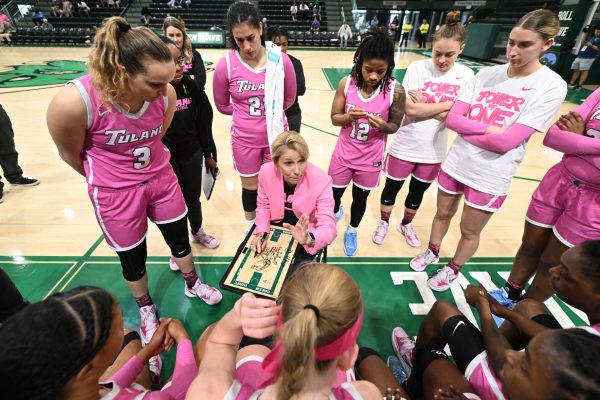No headline provided

August 24, 2012
Amid the clatter of construction work in the National World War II Museum, a quiet exhibit lies in a dimly lit room. The sign above the entrance reads, “Deadly Medicine: Creating the Master Race.” This traveling exhibit’s haunting photographs and stories depict the history of eugenics, the science of creating a desirable race through selective breeding, in Nazi Germany.
Originally housed in Washington, D.C.’s United States Holocaust Memorial Museum, “Deadly Medicine,” sponsored by the Tulane School of Medicine, recently made its way to New Orleans.
Benjamin Sachs, dean of the Tulane School of Medicine, negotiated with the museum to bring the exhibit to New Orleans. Sachs contemplated having the exhibit on campus but ultimately decided to work with the World War II Museum.
“They have much more public traffic with more people coming through the World War II Museum,” Sachs said. “Putting it somewhere in the medical school or even somewhere else on campus probably would not have gotten the same public attention.”
The exhibit features written information supplemented by photographs, videos and historical advertisements. It explores the methods used by the Nazis to test and experiment on prisoners.
“Literally, [Nazis] would take prisoners who were, by and large, Jewish, hippies, political dissenters, gays and Christians who were resisting Nazism, and they would strap them to gurneys naked outside and leave them in sub-zero temperatures and see how long it would take them to die,” Sachs said.
Tulane parents Jerome and Tracey Carter found the exhibit to be extremely eye-opening and emotional.
“[The Nazis] were starting with the innocent people in life – the babies, the mentally ill, the people who have ailments or illnesses,” Tracey Carter said. “They treated them like experiments, like animals and not as human beings.”
Jerome Carter also found the exhibit powerful.
“It’s hard to believe that we’re supposed to be a civilized people, but the way that we treat each other – not just back then, but even now – it’s disturbing,” Carter said.
Sachs plans to highlight the relation of this exhibit to current events during a series of associated lectures, panels and film screenings this semester at Tulane.
Laura Levy, vice president for research in immunology and microbiology at Tulane, will speak at the Oct. 11 panel.
Levy’s talk will explore the way researchers responded to the call for more regulations on trials done with human subjects. She will also draw attention to the Institutional Review Boards, which examines protocols of any test involving people.
“The formation of the laws that mandate the Institutional Review Boards is a response in large part, not just to Nazi atrocities but to other circumstances where we saw harm done to individuals because of the lack of control,” Levy said.
Sachs said these topics are still relevant, though the days of Nazism are fading.
“You know, there have been people today calling for sterilizing Medicaid recipients who have too many children or for sterilizing people who are mentally incapacitated,” Sachs said. “Those issues haven’t really gone away, unfortunately.”
Sachs hopes the exhibit will draw many Tulane students.
“This exhibit reminds us in the medical profession of the importance of treating all human beings equally, regardless of race, color, creed or sexual preference,” Sachs said.
Tulane’s School of Medicine updated the Hippocratic oath, the pledge that graduating medical school students take, to reflect these principles.
“I think it ties it all together as to why we’re doing all of this,” Sachs said. “At medical school, it’s easy to learn about science and learn about disease, but it’s the ethics and the way that one practices in the end which are so vital to being a great physician.”
The exhibit runs until Oct. 15 and lectures, panels and other related events run through Oct. 11. Both are free for all Tulane students with a Splash Card.






















Leave a Comment